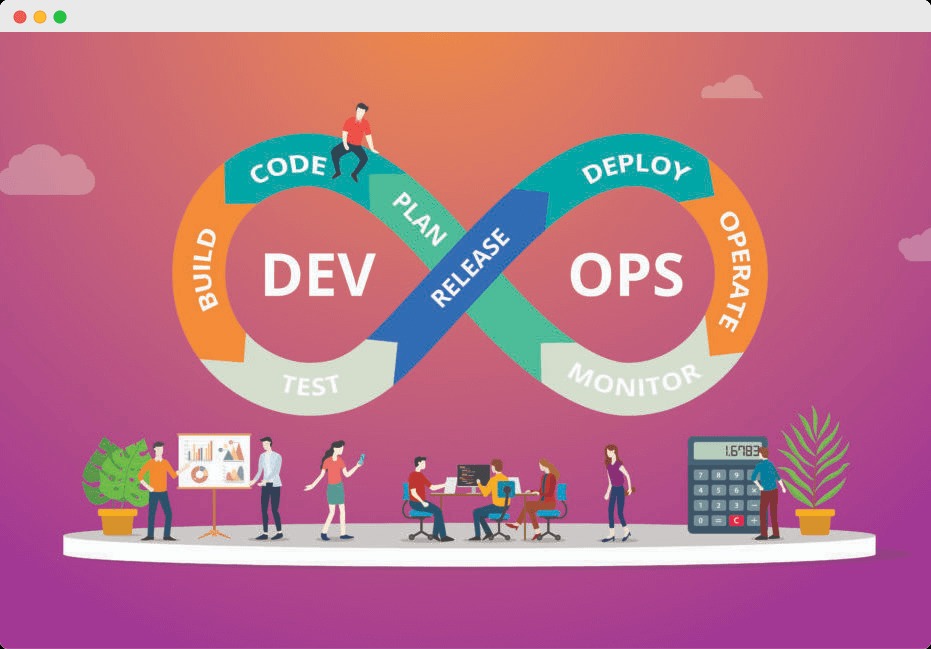In the ever-evolving landscape of software development and IT operations, the emergence of DevOps has revolutionized the way organizations build, deploy, and maintain software systems. DevOps, a portmanteau of “development” and “operations,” represents a cultural shift that aims to break down silos between development and operations teams, fostering collaboration, automation, and continuous improvement throughout the software delivery lifecycle.
Understanding the DevOps Philosophy
At its core, DevOps is not merely a set of tools or practices but rather a mindset focused on aligning the goals, processes, and workflows of development and operations teams. Traditional software development models often lead to friction and inefficiencies between these two groups, with developers focusing on delivering features quickly and operations teams prioritizing stability and reliability. DevOps seeks to bridge this gap by promoting shared ownership, transparency, and accountability across the entire software delivery pipeline.
One of the key principles of DevOps is the concept of “Infrastructure as Code” (IaC), which advocates for the automation and codification of infrastructure provisioning, configuration, and management. By treating infrastructure as code, organizations can leverage version control systems and automation tools to define, deploy, and manage infrastructure resources programmatically, thereby reducing manual errors and increasing scalability and agility.
Implementing DevOps Practices
DevOps encompasses a wide range of practices and techniques aimed at streamlining the software delivery process and improving collaboration between development and operations teams. Continuous integration (CI) and continuous delivery (CD) are foundational practices in DevOps, enabling teams to automate the build, test, and deployment of software changes. CI/CD pipelines automate the process of integrating code changes, running automated tests, and deploying applications to production environments, thereby reducing cycle times and increasing the frequency of software releases.
Another crucial aspect of DevOps is the adoption of “Site Reliability Engineering” (SRE) principles. SRE extends the principles of traditional operations to software engineering, emphasizing reliability, scalability, and performance as first-class concerns. SRE teams leverage automation, monitoring, and incident response practices to ensure the reliability and availability of systems, while also fostering a culture of blameless postmortems and continuous improvement.
Cultivating a DevOps Culture
Building a successful DevOps culture requires more than just adopting tools and practices; it requires a fundamental shift in mindset and organizational culture. Central to this transformation is the concept of “CAMS” – Culture, Automation, Measurement, and Sharing. Organizations must foster a culture of collaboration, trust, and continuous learning, where individuals are empowered to experiment, innovate, and take ownership of their work.
Automation plays a critical role in enabling DevOps practices, allowing teams to streamline repetitive tasks, reduce manual intervention, and accelerate the delivery of software changes. However, automation alone is not sufficient; organizations must also establish clear metrics and Key Performance Indicators (KPIs) to measure the effectiveness of their DevOps initiatives. By tracking metrics such as deployment frequency, lead time, and mean time to recover (MTTR), teams can identify areas for improvement and drive continuous optimization.
Conclusion
In conclusion, DevOps represents a cultural and organizational shift that seeks to break down barriers between development and operations teams, enabling organizations to deliver software faster, more reliably, and with higher quality. By embracing DevOps principles and practices, organizations can streamline their software delivery process, increase collaboration and alignment across teams, and ultimately deliver more value to customers. However, building a successful DevOps culture requires more than just implementing tools and practices; it requires a commitment to continuous improvement, collaboration, and innovation at all levels of the organization. With the right mindset, practices, and tools in place, organizations can harness the full potential of DevOps to drive business agility and competitive advantage in today’s fast-paced digital economy.

